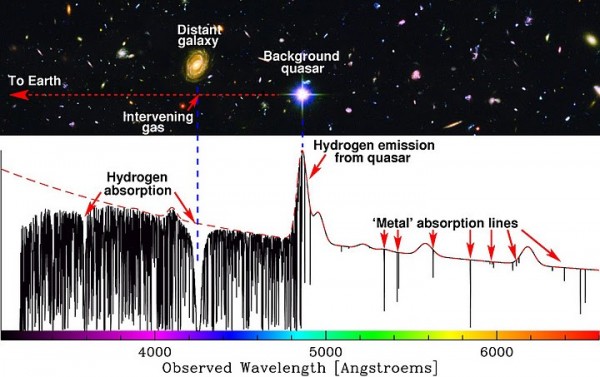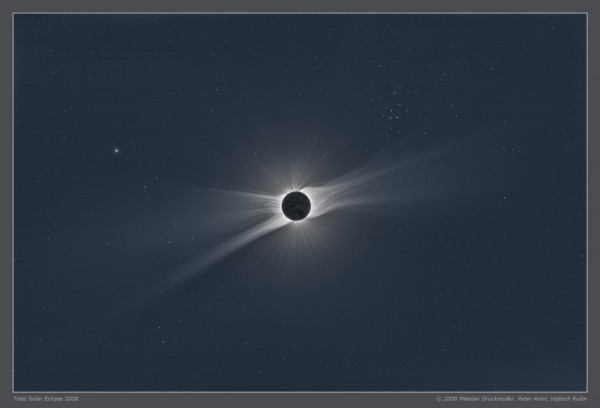“Einstein, my upset stomach hates your theory — it almost hates you yourself! How am I to' provide for my students? What am I to answer to the philosophers?!!” -Paul Ehrenfest
It's been another great week here at Starts With A Bang, and we've shed light on a number of wonders of the Universe, from galaxies to dark matter to some of the amazing properties of relativity itself. As always you’ve had plenty to say about it as well. Over the past week, in case you missed anything, we covered:
- How do I write a science blog? (for Ask Ethan),
- The Best (Worst) Fake Astro Pics (for our Weekend Diversion),
- The Galaxy at the Head-of-the-Chain, M84 (for Messier Monday),
- The Temperature of Dark Matter,
- The Night Comes Alive, and
- The 95th Anniversary of Relativity's Confirmation (for Throwback Thursday).
With a wide range of things to address, what did you say? Without further ado, here are your Comments of the Week!
 Image credit: Extended Learning Institute at NOVA, via http://elifestudentblog.blogspot.com/2012/09/new-student-lingo-workshop….
Image credit: Extended Learning Institute at NOVA, via http://elifestudentblog.blogspot.com/2012/09/new-student-lingo-workshop….
From Pete A on the topic of writing a science blog: "1) Never assume that one’s readers all reside in the USA.
2) Always use the International System of Units and related nomenclature.
3) Either moderate reader comments or just disable the commenting facility. Genuinely interested readers are quickly turned away from a blog after trying to wade through endless comments along the lines: “Great article!” or “You don’t know what your [sic] talking about.”"
When you give advice or an explanation on any subject on the internet ever, you're always going to find additional gems that either you chose to exclude or that didn't occur to you in the first place. (Some more excellent ones can be found from Sabine Hossenfelder, FYI.) The first one is particularly important: I remember the first time I tracked my analytics and discovered that a full 50% of my audience (and this has remained consistent) was from outside the USA, including large traffic presences from Europe, Australia, India and Brazil. It's funny that it didn't occur to me to give advice about that to Alexander because he's neither American nor living in the USA.
 Image credit: Nathan Gates (tornadonate) of http://wellnessandaction.com/2013/07/17/internet-trolls-negativity-and-….
Image credit: Nathan Gates (tornadonate) of http://wellnessandaction.com/2013/07/17/internet-trolls-negativity-and-….
But as far as comments go, you have to choose what you do about them. Do you allow everything? Nothing? Do you moderate, and have a set of what's acceptable/unacceptable to you? What I'd really recommend -- unless you choose the "nothing" option -- is to set up a comments policy for your blog and stick to it. I've done my absolute best to set up one that allows almost anything that isn't terrible, but there's no way to account for people who have no respect for those with actual, factual expertise in an area. Some people are simply going to confidently speak from a position of ignorance because that's what they do.
Welcome to the jungle.
From G on the subject of Fake Astro Pics: "Some of those qualify as artistic and evocative. Software has enabled talented people to produce images that could not have been produced before, but, to quote Frank Zappa re. music synthesis software, it’s also “enabled a whole new generation of dreckmeisters.”
So it is that we see (and hear) plenty of good art, plenty more mediocre art, and a large serving of dreck."
And the big problem with this, as G goes on to illuminate, is that plenty of people know little enough about what's actually out there in space that they see some of the dreck (or artwork in general) getting passed off or marketed as genuine, when in fact that's simply not the case. As I showed you, the image above has been circulated, claiming to be the galaxy over the pyramids. In fact, these are two real unrelated images disingenuously merged together and passed off as real.
 Images credit: Rom of flickr at http://www.flickr.com/photos/romsrini/81424359/ (L), Hubble Legacy Archive, ESA, NASA w/ Processing by Robert Gendler, via http://apod.nasa.gov/apod/ap100503.html (R).
Images credit: Rom of flickr at http://www.flickr.com/photos/romsrini/81424359/ (L), Hubble Legacy Archive, ESA, NASA w/ Processing by Robert Gendler, via http://apod.nasa.gov/apod/ap100503.html (R).
But there is a place for astronomical art: when it's used to illustrate important physical systems that we cannot obtain actual images of. For example, exoplanet system, the interiors of star-forming regions, protoplanetary disks, or regions from the young Universe beyond the reach of our telescopes. Thankfully, we have watchdogs out there like @FakeAstropix and @PicPedant to help you separate what's a real image from what's not, and hopefully last weekend's tips will help you from being fooled yourself.
A fun little poem from PJ on our Messier Monday post:
"Aaah, to get cracking,
with the photos and stacking
when the weather is clear once again.
To set up the ‘scope
after SHE says ‘no hope’
I’ll get there after she’s gone to bed."
Just like regular photography, I've still never quite gotten into astrophotography as a hobby for myself. But looking through your own optics at the Universe in the raw? Still unlike anything else here on Earth!
From bobh on the Temperature of Dark Matter: "So the more detailed write up was informative, thank you. I’m missing something on the Lyman-Alpha data though. Clearly since DM does not affect the Lyman-alpha directly because of no electromagnetic interactions between dark and regular matter so any impact would be due to the gravitational interaction between DM [and] norma[l] matter. You say “if the dark matter were warmer, the depths of those lines would be suppressed by a specific amount, while if the dark matter was colder than a certain amount, those absorption lines would be up to 100% efficient”. Wouldn’t it also be true that the absorption lines would be 100% efficient if there were no dark matter at all?"
So what's happening with these absorption lines? We have dense clouds of gas that have collapsed by a certain amount on small scales in the Universe. They appear at all redshifts, and they increase in density over time.
The big question about dark matter, however, is what does it do to these little structures, and in particular, what does it do to them early on? In hot dark matter models, they suppress the growth of structure early on, meaning that small scales and at high redshift, we'd see absorption lines that weren't as strong as they were at later times.
We don't see any evidence of that at all, out to redshifts of more than six. This tells us that if dark matter were ever in thermal equilibrium with the early Universe, it has to have a rest mass of at least tens of keVs, or at least a factor of about 100,000 heavier than neutrinos are known to be. Yes, it's true that if there were no dark matter -- because protons have masses of around 938 MeV -- the Lyman-alpha forest would look like this as well... but large-scale structure would be ruined.
Cosmology, you must remember, is like a giant puzzle that we're trying to put together. You have to look at all of the pieces together to know what you're seeing.
Again from PJ on The Night Comes Alive: "This shows why some of us put up with frostbite & other nasties just to try to get a decent photo of natures treasures."
It's a really amazing video and I was delighted to get to share the science behind it with you. Thanks for sharing your perspectives and your firsthand knowledge of the joys and drawbacks of experiencing it for yourself. And finally...
From Cleon Teunissen on the 95th Anniversary of Relativity's Confirmation: "My best guess is that only by the 1930′s, with a mature theory of quantum physics developed, it became somewhat meaningful to imagine what would happen to photons in a newtonian gravitational field. As you describe, in such a thought experiment one arrives at a deflection that is about half the value that is predicted by GR.
Surely, in 1919 that thought experiment was too far-fetched to be considered.
But you suggest that in 1919 a case could be made that “Newton’s gravity would bend light”."
You know, this is sometimes a hot point of contention among science historians, but it shouldn't be. While wave/particle duality for electrons and particles in general was not at all developed by 1919, it was very well developed for photons! After all, the work of Huygens, Young, Fresnel and Arago was instrumental in establishing that photons definitively exhibited wave-like behavior, and it was Einstein himself in 1905 who taught the world about the photoelectric effect, with photons absolutely demonstrating properties exclusive to corpuscles, or particles.
 Image credit: Astrophysics Pro, via http://astrophysics.pro/experiments/photoelectric-effect/.
Image credit: Astrophysics Pro, via http://astrophysics.pro/experiments/photoelectric-effect/.
But all of that is moot: even before E=mc^2 came along, it was theorized that -- under Newton's corpuscular framework -- one could treat light as a fast-moving particle. Historically, the Newtonian prediction had been worked out as early as 1801:
The first calculation of the deflection of light by mass was published by the German astronomer Johann Georg von Soldner in 1801. Soldner showed that rays from a distant star skimming the Sun's surface would be deflected through an angle of about 0.9 seconds of arc, or one quarter of a thousandth of a degree. This angle corresponds to the apparent diameter of a compact disc (CD) viewed from a distance of about 30 kilometers (nearly 20 miles). Soldner's calculations were based on Newton's laws of motion and gravitation, and the assumption that light behaves like very fast moving particles.
So there it is: the case could not only have been made in 1919, but it was actually made over 100 years earlier. Let this be the end of that debate for ever and ever.
Thanks for your great comments this week; keep leaving them and let's keep the great discussions going!






Hi Ethan,
I agree of course that it was possible for Soldner to arrive at a deflection value for particles - any particles - moving at the speed of light.
Significantly, it was not necessary for Soldner to know the mass of the hypothesized light particles. Because of the equivalence of inertial and gravitational mass the mass of an individual body has no effect on the shape of its orbit. (Just as the periods of the planets in their orbits around the Sun allow us to assess the mass of the Sun, but _not_ the masses of the individual planets. Likewise, to assess the trajectory of any particle moving at any velocity the relation E=mc^2 is not involved in the calculation.)
In hindsight we see that Newton too could have arrived at Soldner's deflection, had he taken on that calculation. Newton was aware of the speed of light that follows from Roemer's hypothesis, and he endorsed the Roemer hypothesis reasoning.
Arago's spot
As you describe in your article about Arago's spot, in the course of the 19th century it was established that light was definitely a wave phenomenon.
https://medium.com/starts-with-a-bang/the-unparalleled-power-of-experim…
Over the course of the 19th century the plethora of interference effects with light ruled out the possibility of propagating light being traveling particles.
I agree of course that Einstein's 1905 articles in the field of statistical mechanics were tremendous, and that the assessment of the photo-electric effect in terms of statistical dynamics gave strong evidence that the 19th century model of light needed fundamental revision.
http://www.pitt.edu/~jdnorton/Goodies/Einstein_stat_1905/index.html
I am convinced that in 1919 the physics community lived by the same standard of carefulness as today: extraordinary claims require extraordinary evidence.
Yes, by the beginning of the 20th century the signs pointing to some particle/wave duality for light were there. But physicists are very cautious - and rightly so - and living by that caution the concept of some particle/wave duality for light remained highly hypothetical. I believe that it was only after a mature mathematical theory of quantum physics was developed that physicists felt that the concept of particle/wave duality had become inevitable.
So: for the 1919 physics community only two possibilities were plausible: either no deflection, or GR deflection. In 1919 the Soldner deflection as outcome was regarded as vanishingly implausible, if considered at all.
Thanks for your reply, Ethan, and for the link to Sabine Hossenfelder's gems of wisdom -- my favourite is: "If insults pile up in your comment section, you’re expressing yourself too clearly."
Your early traffic analysis is interesting and I'm very pleased that you have such a geographically diverse audience.
I read all of your posts (even though most subjects are far beyond my ability to ever properly understand them) because you make science fun to learn and something to be deeply curious about. Each post contains at least one item that I am able to understand, which inspires me to learn more about it.
My sincerest thanks for sharing your knowledge with us.
I have read this blog 3 times. That is 1 time more then usual. I see (you dont say it) that there is an association between non-USA and trolling. So i suppose you see me as a troll. Does not hurt me, i would dislike bad Dutch in my blogs too. That is only human-like. Because i do understand you, i will not comment no more. Well after 1 question.
The most common numbers say there is amount of dark matter compared to the rest of 63%. Thats is huge. This dark matter bends spacetime. Else you would not use it to explain the speed of tumbeling masses in galaxies. For light it does not matter how spacetime got bended. Light just follows the easyst path given by spacetime. Again, 63% is huge. We should see that. Its so huge that light should be scatterd all over the sky. We should be unable to see 1 lightpoint in the sky.
So why dont we see light act like there is 63% dark matter arround ?
@scienceblogs fan #3: That's a very, very strange inference to make ("You think I don't write good English, so you must think I'm a troll.") Very strange indeed, and not supported by anything Ethan has written.
The fact that you have made wild assertions in your comments, unsupported by evidence, and claiming to overturn well-established physics. Now _that_ would make us suspect you're a troll. Especially if you respond disparagingly to anyone who tries to correct your invalid assertions.
Let's take this case. As you might know, if you have read any of Ethan's other blog postings, we *DO* see light bent by dark matter. Everywhere! In fact, it is that bending, which is larger than we would expect given the luminous galaxies, that is one of the best evidences we have! Look up the following three terms in a *reputable* source: Bullet Cluster, weak lensing, strong lensing.
@ scienceblogs fan
I'm from Europe as well, and have been on Ethan's blog for several years now. NEVER was I treated as a troll but more importantly NEVER EVER was anyone's race/color/creed been brought up for anything! That's is, until you falsely made such claims.
You might not agree with certain scientific majority view, and that is your right. This blog is not preventing you do your science. This blog is not the place to promote your theories however.
But science or no science, making false racial accusations is extremely vile. You are not a troll... you're an ass.
@scienceblogs fan #3
The association that you think you saw "between non-USA and trolling" is most probably the result of a very unfortunate mistake that you repeated each time you read the article. The graphic of the troll introduces Ethan's response to my third point (3), it is not a graphic used to illustrate his response to my first point (1).
Read the article again, using this information, then I'm sure that you be able to see your error of judgement.
In case you (or anyone else) didn't understand my first point "1) Never assume that one’s readers all reside in the USA." I shall explain this aide-memoir…
There is a tendency for authors (especially those new to blogging) to forget that their audience is international. Even some peer-reviewed scientific papers contain phrases such as "government policy", "warm weather", etc.: phrases that are totally meaningless to readers in other regions of the world.
People who converse (verbally and electronically) mainly with others in the same locale have no need to qualify phrases such as "government policy" and "warm weather" because both the talker and the listener automatically apply the correct context without needing to think about it. If this process was not automatic then our everyday verbal communications would be long-winded, slow, and very tedious.
This automatic process works because the communicating parties already share the same locale-specific metadata (contexts) therefore transmitting the metadata along with the message would be sending redundant information.
Conversely, when writing to an international audience, the metadata (contextual) differences must be thought about carefully. Some of the metadata has to be transmitted in order to aid understanding and to avoid misunderstanding.
Gosh, that was long-winded!
I have a completely unrelated question, but one which I hope Ethan and some other will find interesting.
What is the most common liquid in the universe?
I was promted to think of this last night, as I was considering the unusual properties of water (lower density for its most common solid phase, etc.). And I thought to myself, "if there's more of it than any other liquid, perhaps we should be saying that water is usual and all the other liquids are unusual....but hey, is there more of it?"
@ eric
given that the temperature of interstelar/intergalactic space is either extremely cold or extremely hot, liquids of any sort aren't really the preferred state. Either solid (frozen) or ionized.
Thus any liquid would be found either on planets or around stars. Maybe inside some asteroids. Weather the substance is in liquid form is entirely dependent on the properties around it.. which is very local.
Anything can be liquid.. even molten rocks..
Sinisa,
I agree with all that...but you didn't answer my question. :)
@eric: I think Sinisa did answer you, implictly. If "liquidity" is strongly dependent on local, immediate environmental conditions, then your question is unanswerable. We don't know those local conditions, except in a very few rare cases (Earth, Titan): even the planet second-closest to us is still unknown, when it comes to the presence of liquid anything!
The most common environmental state (by volume) in the Universe is a temperature of a few kelvins and a density of one atom per cubic meter. No liquid. Barely even gas.
@10: I recognize the answer's going to be greatly uncertain, perhaps even just being a back-of-the-napkin type of exercise. That's okay. I still want a cosmolgist's or astronomer's or whatever-the-appropriate-specialty-is's best SWAG on it, with reasoning. "We don't have enough data to try and answer a question on liquid abundancies" seems a bit of a cop-out on a website that frequently discusses what might have come before the inflationary period and what the likely properties of dark matter could be. :)
@ Eric
let's look at it reasonably. every element has different temperature/pressure at which it changes it's state. maybe you think astronomers know what the temperature/pressure are in any randomly selected point of universe.. but they don't. or what chemical compound is present and how many of it. even if they did, how do you average something like that out?
back of the napkin calculation.... answer.. NONE. Liquids are the rarest of the rare states of matter in the universe.
Here's the reasoning. "average" universe temperature is temperature of CMB which is 2.7K At that temperature no element or chemical compound is in liquid state. The most abundant element in universe is hydrogen, and at that temperature it's a solid. But like Michael answered you, the average density of anything in interstellar space is so low that you can't even make a liquid
I get that liquids are extroadinarily rare. But we can still ask which are relatively more common than the others. As an analogy, I'm asking who the best ping pong player is and you guys keep responding "far more people play football." Okay, so what? That's a non-answer.
I think we are probably in agreement that I don't know the answer, that you don't know the answer, and that Michael doesn't know it. But I remain optimistic that someone could probably take a decent crack at answering it. And I'm somewhat surprised that two scientists would imply or suggest that such a question is unanswerable.
Eric,
I totally agree with what Sinesa and Michael have told you; the liquid state is a very rare state, cosmologically speaking. Certainly, you can't expect interstellar space to hold liquids. Liquids require a combination of just right temperatures and pressures. The temperature and pressure are both too low in interstellar space.
In stars, the pressures are there, but the temperatures are too high for any component of the star to exist as a liquid. Even neutral atoms cannot exist at stellar temperatures; stars exist as plasmas which are composed of ionized atoms.
That leaves non-stellar bodies such as planets, satellites, astroids, etc. as the main candidates for liquids. Those bodies can possess the correct temperatures and pressures for liquids to exist. Generally, things like astroids and comets are too small to maintain an atmosphere, so the pressure requirement is not met, and there is no liquid expected to be present on such bodies.
That leaves only planets and satellites large enough to maintain an atomsphere. Unfortunately, we have only the planets and large satellites of our own solar system to study in this regard. We cannot do spectroscopy on exoplanets to determine their composition. If we use our own solar system as a guide, it would seem that the most common liquids would be water, methane and ammonia. This is very dependent on local conditions, as has already been pointed out, though, so we don't really have any confidence that this would apply universally.
Eric,
There is a distinct but subtle difference between questions like "what happened before the big bang" and "what is the most common liquid in the universe". With questions like the first, we can speculate on answers. The reason is, first of all, that we are dealing with a much simpler system. A universe without matter or radiation, but only an inflationary field is fairly simple to deal with mathematically, so we can use that mathematics to make hypotheses. Further, we can take those answers and say things like "if that's the right answer, then we should observe X, Y and Z today." We can then go out and make these observations to see if these predictions hold true.
With questions like yours, however, there is no theoretical basis for an answer. The system is much more complex - we know that local conditions can vary. There is no grounds for us to make any predictions as to what we would observe if, say water, is the most common liquid. The observations we make would be identical if ammonia, methane or some other substance would be the most common liquid. That's not to say your question is unanswerable in principle, just that given our current theoretical knowledge and practical ability to make observations, we cannot measure it. That could conceivably change in the future.
@ Eric
in order for the question to be answerable even as a 50% hypothesis, we would need a catalog of 50% of ALL planets, asteroid and commets in the OBSERVABLE universe. But not just spacial catalog, chemical and geological survey for all those as well. Even then, there's a half change the other 50% if different.
Find a civilization capable of intergalactic travel who has surveyed hundreds of thousands of worlds and they might know the answer. But sadly, we are still not a member of Federation of Planets ;)
@Eric, your analogy is flawed. Your original question is more like asking, "Who is the bst fungaboo player?" without anyone knowing what fungaboo is or whether it even exists. Then going on to insist that because we can spell fungaboo, we must be able to figure out how it is played and who the best player is.
Peter Medawar famously wrote that "Science is the art of the soluble." You should *NOT* be surprised at all when professional scientists tell you that your naive question is unanswerable. It means that there is not only not enough data, but there isn't even a theoretical or experimental basis for _acquiring_ the data needed to answer the question. I, Sinisa, and Sean T have spelled that out for you in increasing detail.
Perhaps if the question was re-phrased to something like, "If the average temperature of the universe was 25 degrees C, what would the most common liquid be?", this question would have a better frame of reference.